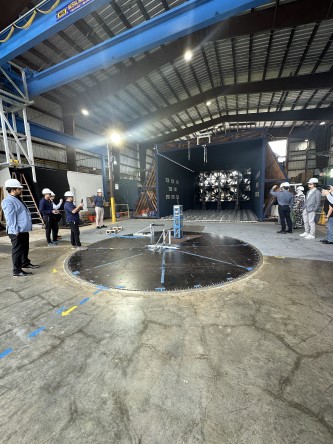A lab demonstration was part of the workshop titled “New Trends in Real-Time Hybrid Simulations To Advance Fluid-Structure Interaction Research.” Photo: Contributed
The Lehigh Real-Time Multi-Directional Hybrid Simulation facility, which has been a leader in the development, implementation and application of real-time hybrid simulation to investigate how structures respond to natural hazard events and to develop and evaluate strategies to improve resilience, was also part of a 30-minute live demonstration of advancements in hybrid simulation to investigate and attenuate wind-induced vibrations of a 40-story building.
In the past, Lehigh has focused on earthquake natural hazards. In collaboration with Florida International University, Lehigh has migrated toward applying real-time hybrid simulations to wind natural hazards that occur under hurricane conditions. The development of real-time hybrid simulations for wind engineering is deemed a game changer in wind tunnel testing.
“This is going to revolutionize wind tunnel testing,” said James Ricles, the Bruce G. Johnston Professor of Structural Engineering and principal investigator of research at Lehigh's Real-Time Multi-Directional Hybrid Simulation facility. “It's impossible to bring a skyscraper into the laboratory, so we are linking a structural model in a computer with a physical aeroelastic model in the laboratory to capture fluid-structure interaction effects in a more accurate manner.”
Contributors to the research include Ricles; Lehigh research scientists Liang Cao and Thomas Marullo; Amal Elawady, assistant professor of civil and environmental engineering at FIU's College of Engineering and Computing and co-principal investigator of research at FIU's Natural Hazards Engineering Research Infrastructure Wall of Wind Experimental Facility; FIU Ph.D. candidate researcher Haitham Mohamed; and Wall of Wind research scientist James Erwin.
More information on the NHERI Lehigh RTMD facility can be found at https://lehigh.designsafe-ci.org/facility/overview/.Lehigh University NHERI Experimental Facility






